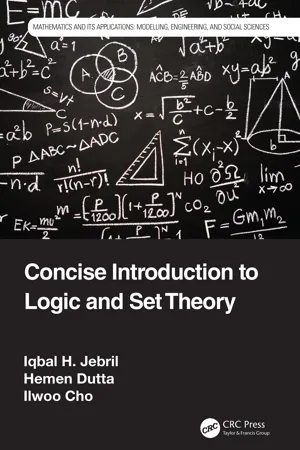Function Basics
A function in mathematics is a rule that assigns each input exactly one output. It can be represented as an equation, a graph, or a table. The input is also known as the independent variable, while the output is the dependent variable. Functions are fundamental to understanding relationships and patterns in mathematics.
3 Key excerpts on "Function Basics"
- eBook - ePub
Differentiating Instruction in Algebra 1
Ready-to-Use Activities for All Students (Grades 7-10)
- Kelli Jurek(Author)
- 2021(Publication Date)
- Routledge(Publisher)
...Unit 1 IntRoduction to Functions and Relationships DOI: 10.4324/9781003234180-2 Beginning algebra students need to take their understanding of linear equations and solving simple one-variable equations and apply it to studying special relations of data called functions. Functions describe everyday situations where one specific quantity determines the value of another. Students must learn to write and evaluate functions because they describe a unique relationship between two quantities and are frequently used to model everyday situations. This unit begins with a preassessment and three real-life applications of functions that can be discussed in small groups and then as a larger group. Many of the activities will offer the students an opportunity to choose learning activities according to their learning style, personal interests, and readiness level. What Do We Want Students to Know? Common Core State Standards Addressed: • 8.F.1, 4 • A.CED.1, 2 • F.IF.1, 2, 5 • F.BF.1c Big Ideas • Not all relationships are functions. • A function denotes a special relationship between independent and dependent variables. • A function must pass the vertical line test. Essential Questions • What makes a relationship a function? • How is the vertical line test used to determine if a relationship represents a function? • Does it matter that a set of data does not represent a function? Critical Vocabulary Domain Function notation Dependent variable Output Range Relation Function Independent variable Vertical line test Input Unit Objectives As a result of this unit, students will know: ➤ a function is a special type of relation, ➤ the difference between a relation and a function, ➤ all functions are relations but not all relations are functions, ➤ the difference between an independent and dependent variable, and ➤ f x) is read...
- eBook - ePub
- Iqbal H. Jebril, Hemen Dutta, Ilwoo Cho(Authors)
- 2021(Publication Date)
- CRC Press(Publisher)
...4 Functions DOI: 10.1201/9780429022838-4 The word “function” was first used by G.W. Leibnitz in 1694. J. Bernoulli defined a function as “any expression including variables and constants” in 1698. The familiar notation f (x) was first used by L. Euler in 1734. We shall present in this chapter the basic properties of functions and induced set functions. 4.1 Functions 4.1.1 Domain and Range Definition 4.1.1 Let A and B be sets and let f be a relation from A to B. f is said to be a function if the following conditions hold: ∀ x ∈ A, ∃ y ∈ B, such that (x, y) ∈ f. If (x, y) ∈ f and (x, z) ∈ f, then y = z. By the above definition, a relation f is a function from A to B, if it is wholly defined on A, and it has a unique image in B for an arbitrarily fixed element. of A. Example 4.1.2 Let A = { 1, 3, 5, 7 }, B = { 2, 4, 6 }, and let f be a relation defined by f = { (1, 2), (3, 4), (5, 2), (7, 6) }. Then f is a function from A to B. Example. 4.1.3 Let A = { 1, 3, 5, 9 }, B = { 3, 7, 11, 16, 19 }, and let f be a relation from A to B defined by f = { (x, y) : y = 2 x + 1 }. It is clear that f is a function from A to B. Example. 4.1.4 Let A = { 1, 3, 5, 9 }, B = { 3, 7, 11, 16 }, and let f = { (x, y) : y = 2 x + 1 }. Then f is not a function, since 9 ∈ A, but there does not exist y ∈ B, such that (9, y) ∈ f. A function f from A to B is also called a mapping from A to B. We. write f : A → B, and this is read “f maps A to B” or “f is a function from A to B”. The set A is called the domain of f, denoted by Dom (f). The set B is called the codomain of f, denoted by codom (f). Definition 4.1.5 Let f : A → B. If (x, y) ∈ f, then we write y = f (x), and we say that y is the value of f at x, or the image of x under f...
- eBook - ePub
- Mel Friedman(Author)
- 2012(Publication Date)
- Research & Education Association(Publisher)
...CHAPTER 5 Functions and Their Graphs CHAPTER 5 FUNCTIONS AND THEIR GRAPHS ELEMENTARY FUNCTIONS A function is any process that assigns a single value of y to each number of x. Because the value of x determines the value of y, y is called the dependent variable and x is called the independent variable. The set of all the values of x for which the function is defined is called the domain of the function. The set of corresponding values of y is called the range of the function. PROBLEM Is y 2 = x a function? SOLUTION Graph the equation. Note that x can have two values of y. Therefore, y 2 = x is not a function. PROBLEM Find the domain and range for y = 5 – x 2. SOLUTION First determine if there are any values that would make the function undefined (i.e., division by 0). There are none. Thus, the domain is the set of real numbers. The range can be found by substituting some corresponding values for x in the equation. The range is the set of real numbers less than or equal to 5. PROBLEM Evaluate f (1) for y = f (x) = 5 x + 2. SOLUTION f (x) = 5 x + 2 f (1) = 5(1) + 2 = 5 + 2 = 7 OPERATIONS ON FUNCTIONS Functions can be added, subtracted, multiplied, or divided to form new functions. a. (f + g) (x) = f (x) + g (x) b. (f – g) (x) = f (x) – g (x) c. (f × g) (x). = f (x) g (x) d. PROBLEM Let f (x) = 2 x 2 – 1 and g (x) = 5 x + 3. Determine the following functions: 1. f + g 2. f – g 3. f × g 4. SOLUTION COMPOSITE FUNCTION The composite function f ° g is defined (f ° g)(x) = f (g (x)). PROBLEM Given f (x) = 3 x and g (x) = 4 x + 2. Find (f ° g) (x) and (g ° f) (x). SOLUTION (f ° g) (x) = f (g (x)) =. 3(4 x + 2) = 12 x + 6 (g ° f) (x) = g (f (x)) = 4(3 x) + 2 = 12 x + 2 Note that (f ° g) (x) (g ° f) (x). PROBLEM Find (f ° g) (2) if f (x) = x 2 – 3 and g (x) = 3 x + 1. SOLUTION Substitute the value of x = 2 in g (x): Substitute the value of g (2) in f (x): f (7) = (7) 2 – 3 = 49 – 3 =...


